I’ve never been a jewelry person, but I can’t stop staring at my engagement ring! How does this little thing sparkle so much? Why are diamonds so expensive? What makes one diamond better than another?
So, per my typical fashion, I decided to do some research and share it with you…
I won’t get too in-depth with numbers, angles, etc but I will give a basic (albeit long) tutorial. This post will be the first of a three-part series.
When most people think of diamonds they think of the 4 C’s: carat, color, clarity, and cut (some men I’ve spoken to say there’s a fifth C – “cost” – but that’s another story). What most people don’t realize is that “cut” is the most important thing to consider when choosing a diamond.
Many confuse “cut” with the shape of a diamond (round, princess, oval, etc) – they are not the same thing. “Cut” refers to the way a diamond is cut from the rough (or from a larger diamond), affecting the proportions, the angles, and the overall sparkle. A well-cut diamond will look larger, hide imperfections, look whiter, and as a whole, be more brilliant. Unfortunately, the majority of diamonds on the market are NOT well-cut.
When I first started researching diamonds, I was surprised to find that one diamond can look a lot larger than another of the same weight. If they’re the same weight, shouldn’t they look the same size? Not so…take a look at the picture below (all images are from the Whiteflash website):

Let’s assume that all three diamonds are the same weight.
The diamond on the right will face up smaller (look smaller when viewed from the top) because there is too much weight on the bottom. Not only do you end up paying for size you can’t see, but the diamond will have less light return as well.
On the other hand, the diamond on the left will face up the largest of the three, but it will be lifeless because as you can see from the picture, light will leak from its sides.
There is, of course, a lot more at play here….angles, dispersion of light, etc but I won’t bore you. If you want to learn more, go to www.pricescope.com – they have a huge tutorial along with a friendly, informative forum that will answer all the questions you will ever have regarding diamonds.
Now, on to the other C’s…let’s start with “color.” A larger percentage of the population is familiar with color, and basically, diamond colors run from D (colorless) to Z (yellow/light brown). There are, of course, fancy colors like pink, blue, etc but I won’t get into that here.
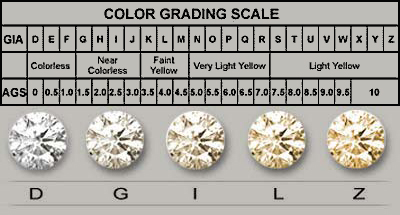
Looking at this picture and the chart, it’s obvious that most people would want a colorless diamond in the D-F range. You wanna know a secret? 95% of the population have trouble seeing color in a well-cut “H” diamond. If a diamond is especially well-cut, you can even go down to “I” or even “J” and no layman would know.
Now, in my case, J was very unlucky because I’m super-color-sensitive. A while back at a Tiffany & Co, I was able to see color in an “F” diamond when no one else in the vicinity was able to. So a high color would be priority for a little freak like me. However, for most people, you can sacrifice a lot on color and save a lot of money in the process….just as long as you get a well-cut diamond!
Just for comparison, a 1.00ct, D, VS1 diamond costs between $7,000-$8,000. Compare that to a 1.00ct, H, VS1 with a range of $4,500-$5,500!
Now on to clarity. Clarity runs from the “FL” (flawless) or “IF” (internally flawless) range to the “I” (included) range:

Based on pictures like these, most people stay clear of anything below a “VVS2.” However, you have to realize that when plotting inclusions, gemologists scrutinize these diamonds under 10x, sometimes even 20x magnification.
If you are lucky, you can find a beautiful “SI1” that is completely eye-clean (which means that you cannot see the inclusions with the naked eye). I even read about one girl who wanted a 2ct diamond on a $10,000 budget. While most jewelers laughed at her, she was patient and found a jeweler who was able to find her a 2ct diamond that was an “I1.” Although she was able to see the largest inclusion, it was positioned on a corner so the prong in her ring completely covered it.
Unless you’re really adamant about a flawless diamond (I know many Asian cultures are picky about clarity and scoff at anything below a “VVS1”), anything in the “VVS” range is overkill, IMHO. Why pay for something you can’t see? For comparison, a 1.00ct G FL diamond can cost $7,500-$9,000. Go down in clarity with a 1.00ct G SI1 and the price jumps down to $4,000 to $5,000.
To reiterate: if you are on a budget, find a well-cut diamond and you can sacrifice a lot on color and clarity. Use the extra money and invest it in your retirement fund. Put it towards your wedding or your honeymoon. Or just buy a larger diamond with it!
Next up: shapes!

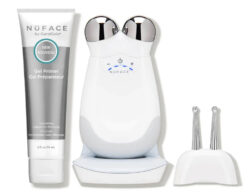
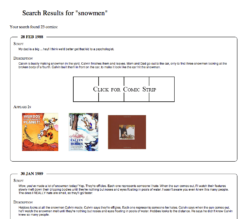
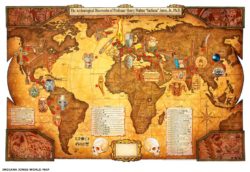
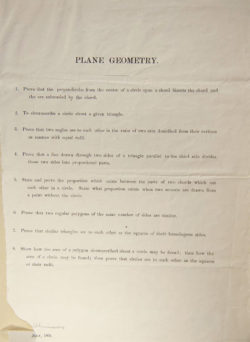

 I like books, gadgets, spicy food, and art. I dislike shopping, hot weather, and the laws of entropy. Although I am a self-proclaimed computer nerd, I still have a love for handbags and makeup... and I am always teetering on high heels. To learn more about me, visit the
I like books, gadgets, spicy food, and art. I dislike shopping, hot weather, and the laws of entropy. Although I am a self-proclaimed computer nerd, I still have a love for handbags and makeup... and I am always teetering on high heels. To learn more about me, visit the 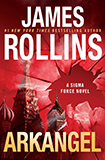
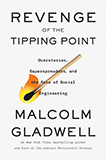
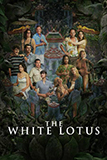
Excellent post. It was very helpful for me. thank you! Wish you make a further progress in the future, I will always look through your website.
I agree with what you are saying about paying for an incredibly high quality diamond, when it is very difficult to see the difference. I have worked in jewellery for 15 years and it is great to read an online post that shows understanding of the fact that you don't need a D VVS1 diamond, to posess a stunning gem. Your explanation about the variation of size that can occur within the same carat weight of diamond, due to the proportion of the cut, is very clear also.
Have a great day.
I totally agree with that a good cut is essential to a diamond's beauty, because even a diamond with outstanding color and clarity will not display the sparkle that diamonds are famous for if its components don't interact with light as they should.
baby bibs
Your last paragraph about the differences in price is very true. Diamondcodes, which is a website for comparing diamond ring prices shows that very well. The misinformed buyer could end up paying way more for a perfect diamond which he could never distinguish from a normal eye-clean one.